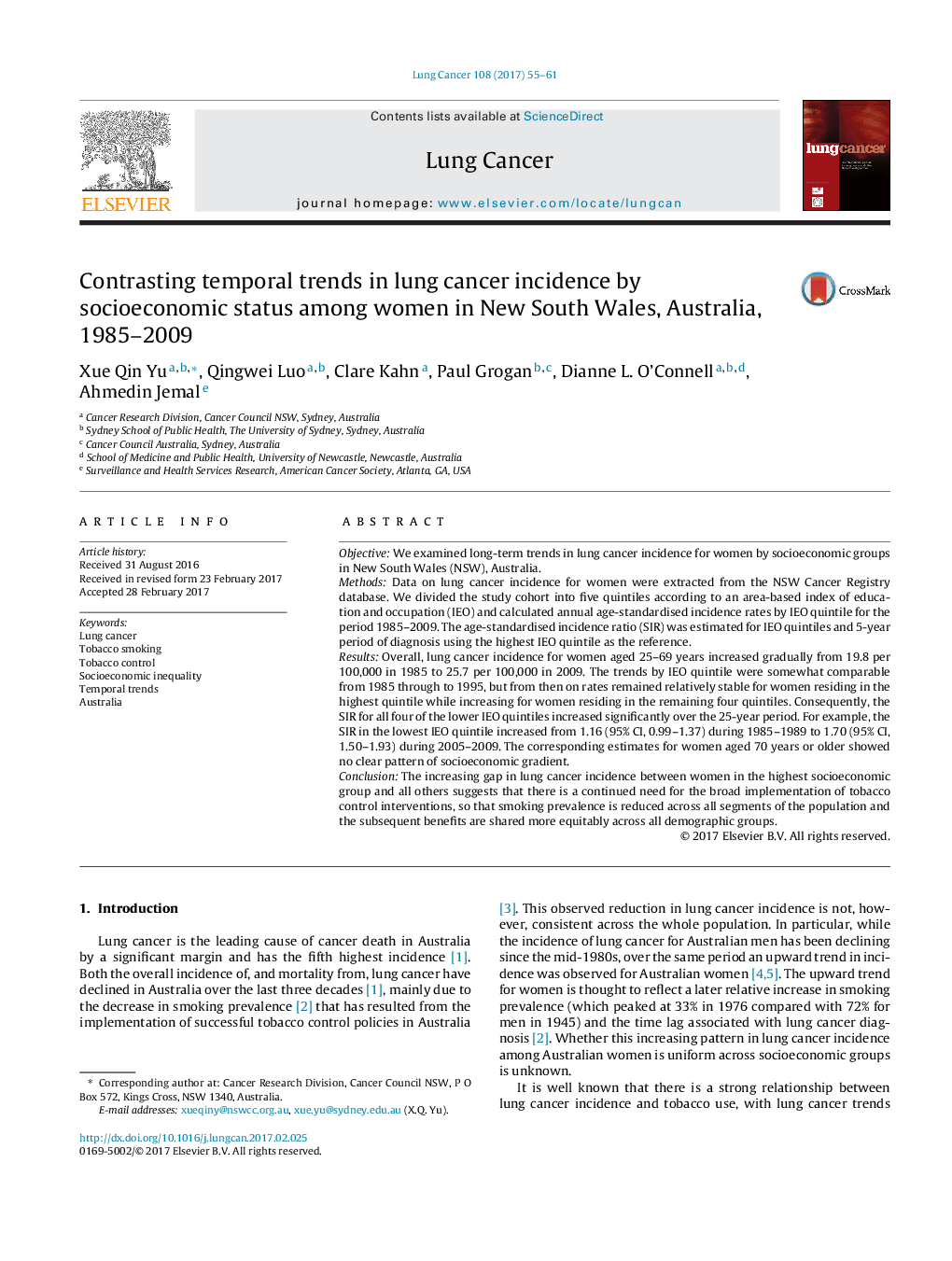| کد مقاله | کد نشریه | سال انتشار | مقاله انگلیسی | نسخه تمام متن |
|---|---|---|---|---|
| 5528178 | 1547959 | 2017 | 7 صفحه PDF | دانلود رایگان |
- Overall lung cancer incidence increased for women in NSW Australia during 1985-2009.
- However the highest socioeconomic group of the population showed a decreasing trend.
- This social inequality will continue unless social disparity in smoking is reduced.
ObjectiveWe examined long-term trends in lung cancer incidence for women by socioeconomic groups in New South Wales (NSW), Australia.MethodsData on lung cancer incidence for women were extracted from the NSW Cancer Registry database. We divided the study cohort into five quintiles according to an area-based index of education and occupation (IEO) and calculated annual age-standardised incidence rates by IEO quintile for the period 1985-2009. The age-standardised incidence ratio (SIR) was estimated for IEO quintiles and 5-year period of diagnosis using the highest IEO quintile as the reference.ResultsOverall, lung cancer incidence for women aged 25-69 years increased gradually from 19.8 per 100,000 in 1985 to 25.7 per 100,000 in 2009. The trends by IEO quintile were somewhat comparable from 1985 through to 1995, but from then on rates remained relatively stable for women residing in the highest quintile while increasing for women residing in the remaining four quintiles. Consequently, the SIR for all four of the lower IEO quintiles increased significantly over the 25-year period. For example, the SIR in the lowest IEO quintile increased from 1.16 (95% CI, 0.99-1.37) during 1985-1989 to 1.70 (95% CI, 1.50-1.93) during 2005-2009. The corresponding estimates for women aged 70 years or older showed no clear pattern of socioeconomic gradient.ConclusionThe increasing gap in lung cancer incidence between women in the highest socioeconomic group and all others suggests that there is a continued need for the broad implementation of tobacco control interventions, so that smoking prevalence is reduced across all segments of the population and the subsequent benefits are shared more equitably across all demographic groups.
Journal: Lung Cancer - Volume 108, June 2017, Pages 55-61
